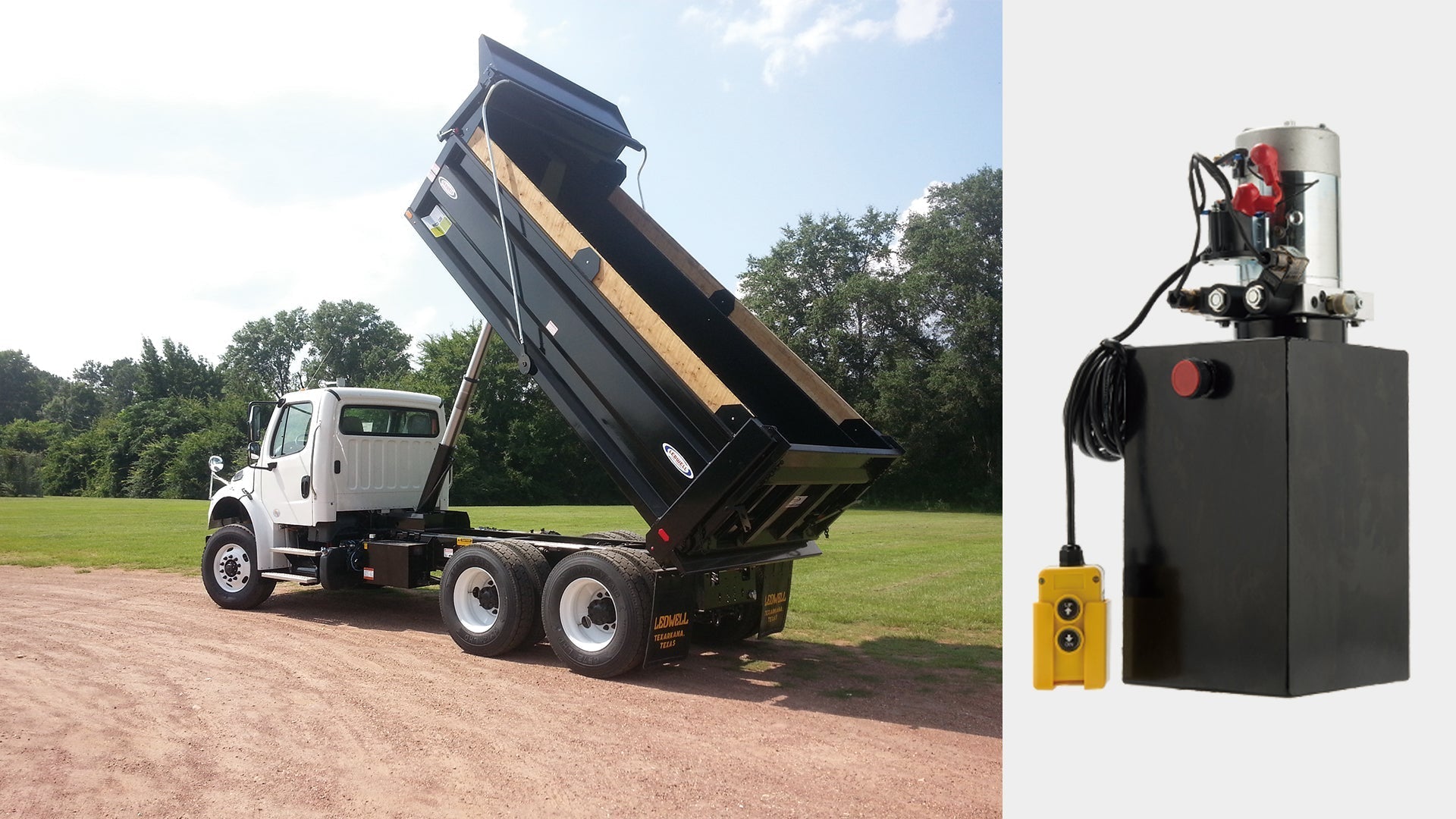The weight of a car is heavy, and it is very difficult to lift a car by muscle power alone, let alone to repair it while suspended in the air. This is the reason why hydraulic systems exist. When you want to work with dump trucks, RVs, boat lifts, lift gates, etc., a hydraulic pump is a must-have tool that allows you to easily complete jobs that are difficult to reach with human power. For some light work, we recommend choosing a 12 volt hydraulic pump, which is a tool of both size and power. Then before buying you'd better choose the type of hydraulic pump you need according to your needs. Next I will give you information about hydraulic pumps you should know.
What is a hydraulic pump
A hydraulic pump is a machine that works with liquid fluid power, using an incompressible fluid, usually a derivative of petroleum and additives, as the working fluid to convert mechanical energy into hydraulic energy. Should hydraulic pumps be non-sparking due to potentially explosive environments? Keep in mind that most operating fluids are derivatives of petroleum, but there are non-sparking options available. Fluid selection should be determined by the operating environment/temperature.
This hydraulic energy can make a relatively small device very powerful and versatile. In the automotive industry, hydraulic pumps are used in combination with jacks and engine hoists to lift vehicles, platforms, heavy loads and pull engines. They can also be used in production facilities for conveyors, mixers, forklifts, etc.
Types of electric hydraulic pumps
Electric hydraulic pumps are generally divided into single-acting and double-acting. The most obvious difference is the number of couplers or connection ports. Single-acting hydraulic pumps include only one port. This port is where the hydraulic fluid is allowed to enter and force the plunger to extend in one direction. Double-acting hydraulic pumps have two such ports. The difference is that the first port is where the "push" (extension) hydraulic hose fitting will connect, and the second port is where the "retract" hydraulic hose fitting will connect.
The difference between single-acting and double-acting hydraulic pumps
When high pressure hydraulic fluid is pumped into a hydraulic pump, the plunger in the single acting hydraulic cylinder extends. When the cylinder needs to be retracted, depending on the cylinder design, the plunger is retracted by either a load weight or a built-in spring. Single-acting hydraulic pumps have fewer components and less potential for error, which facilitates maintenance of the hydraulic pump. Single-acting is ideal for this simple task when fast or controlled retraction is not required.
In a double-acting hydraulic pump, the plunger retracts as the hydraulic fluid is pumped into the top port at high pressure, forcing the plunger back to its original position. The double-acting principle of operation enables hydraulic oil to be pumped to both sides of the plunger. Connection ports located near each end allow the piston rod to move back and forth. The additional ports also allow for more fine control of the plunger during retraction. Faster and predictable retraction makes double-acting hydraulic pumps a better choice for projects requiring repeatable accuracy.
For lightweight applications, such as rear fender lifts on commercial passenger vehicles, where a low power output is required, a 12v miniature hydraulic power unit is a good choice because the 12v motor can be connected to a standard vehicle circuit for the rear fender lift function. There are other application scenarios such as dump trucks, RVs, boat lifts, lift gates, trailers, clearance trucks, car porters, agricultural equipment, snow plow equipment, and a variety of other applications that require powerful and compact hydraulic pumps.
OrionMotorTech's 12 volt electric hydraulic pumps feature hand-held pendants with disassembly lines and starter solenoids that make operation quick and easy.
Frequently Asked Questions
Q1: What is a 12-volt hydraulic pump used for?
A1: A 12-volt hydraulic pump converts electrical power into hydraulic energy to power devices like jacks, lift gates, dump trucks, RVs, boat lifts, and other equipment that requires lifting or pushing heavy loads.
Q2: What’s the difference between single-acting and double-acting hydraulic pumps?
A2: Single-acting pumps have one port and push the piston in one direction, usually retracting by a spring or load weight. Double-acting pumps have two ports and can push and pull the piston, allowing more precise and controlled movement.
Q3: How do I control a 12-volt hydraulic pump?
A3: Most come with handheld remote pendants that have simple plug-in connections and easy-to-use switches for quick operation of the hydraulic system.
Q4: What should I know about the operating limits of a 12-volt hydraulic pump?
A4: They usually have a short-duty cycle (S3), meaning they’re intended for intermittent use, not continuous operation. They should not be used above their maximum pressure or for extended periods to avoid overheating.
Q5: How important is maintenance for these pumps?
A5: Very important! Keeping hydraulic oil clean, checking fluid levels, and ensuring the system is free of air or leaks will help maintain optimal pump performance and extend its life.




